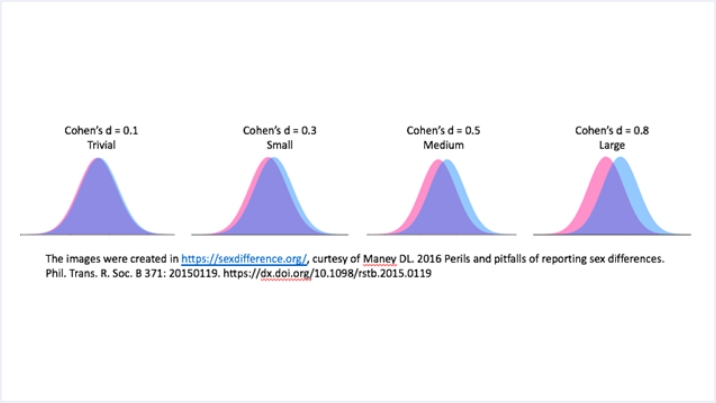

Gender Differences in Psychology / Prof. Daphna Joel
Gender Differences in Psychology / Prof. Daphna Joel
People tend to refer to gender differences in absolute terms – women are like this, men are like that. Yet in reality, no gender difference can be described in this way. Rather, there is some degree of overlap between women and men even on psychological variables that show very large gender differences, such as sexual attraction and extreme physical aggression (which is why these variables were included in the Gender Mosaic Questionnaire). (To learn more about how the Gender Mosaic Questionnaire was constructed, click here.)
Thus, many more women than men are sexually attracted to men, but this doesn’t mean that all women are attracted to men, or that all men are not, nor does it mean that all women are more attracted to men than all men are. Similarly, women and men differ, on average, in the tendency to be extremely physically aggressive, but this doesn’t mean that all men are physically aggressive or that all women are not. In fact, most women and most men are not physically aggressive. The difference between the genders on the group level reflects the fact that within the small group of individuals who may become highly physically aggressive, most are men.
Gender differences are based on comparisons between averages – the average scores for groups of women and men. A statistical measure called “Cohen’s d” (named after the American psychologist and statistician Jacob Cohen) is commonly used to describe to what extent groups differ from one another. The convention in psychology is that differences with a “Cohen’s d” of 0.1 or smaller are considered trivial or negligible, those with a “Cohen’s d” of around 0.3 are considered small, around 0.5 – medium, and around 0.8 or more – large. (When we constructed the Gender Mosaic Questionnaire, we included variables showing a large gender difference. Read more here).

Dozens of thousands of scientific papers reporting on gender differences in psychology have been published in the past half century. Several reviews of these studies concluded that for most psychological measures – including those related to personality, as well as cognitive and emotional abilities – these differences are mostly trivial. For most other variables, they are small or medium. Only few variables – such as physical aggression, occupational preferences, sexual attraction to men or women, and gender identity – show large or very large gender differences.
These differences may differ in different cultures. For example, in the UK sample, there was a large gender difference (Cohen’s d = 0.71) in the answers women and men gave to the question, “How much would you enjoy being an inventor?”; but in the Israeli sample, there was only a small gender difference (Cohen’s d = 0.22) in the answers to this question. (To learn more, read Cultural Differences in What’s Feminine and What’s Masculine.)
The fact that culture has such an impact on gender differences ties in with the question you may have already asked yourself: are gender differences a result of nature or nurture, that is, of biological or environmental factors? You can read about this question here.
In my studies, I was interested in another question: do gender differences in psychological characteristics add up in individuals to create two types of humans, women and men. We found that they do not. Instead, the vast majority of humans possess both feminine and masculine characteristics. (You can read more about the gender mosaic here). You can discover and observe your own mosaic of gender characteristics by filling out the Gender Mosaic Questionnaire.



